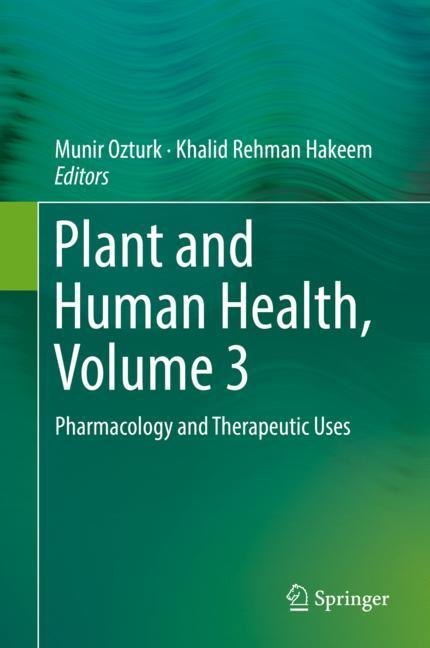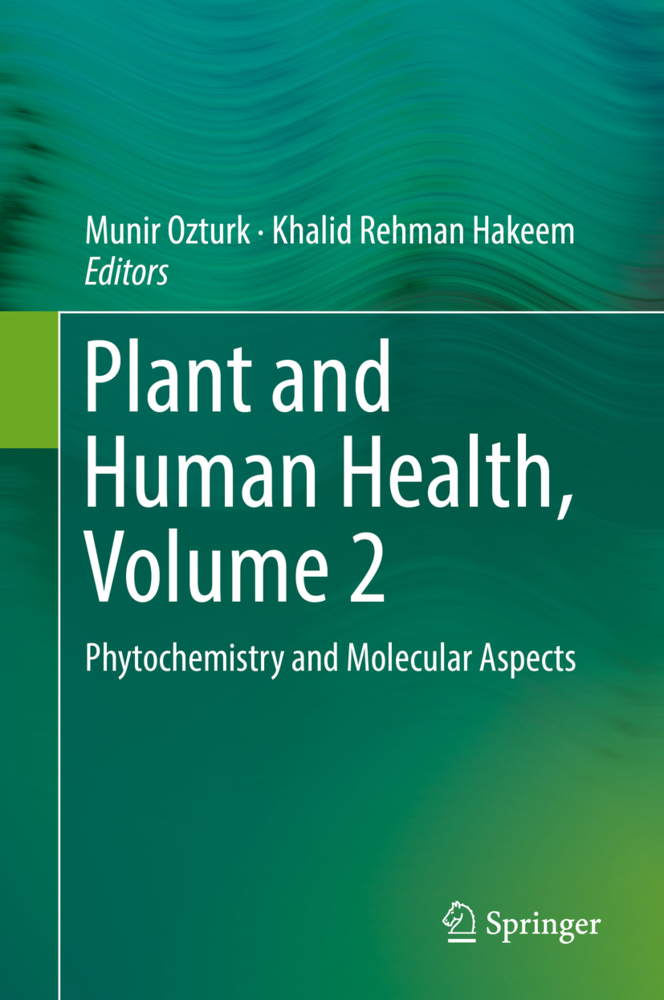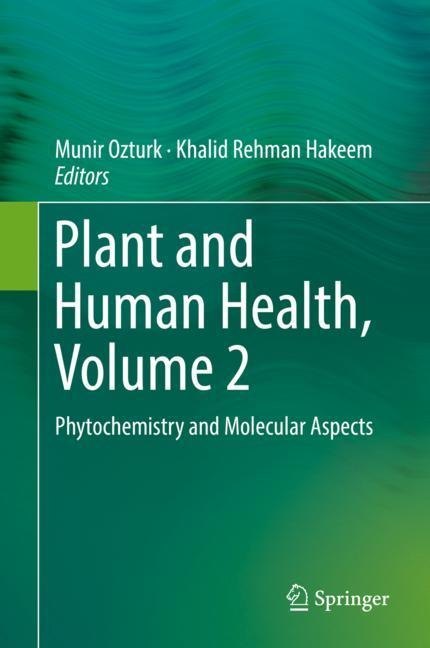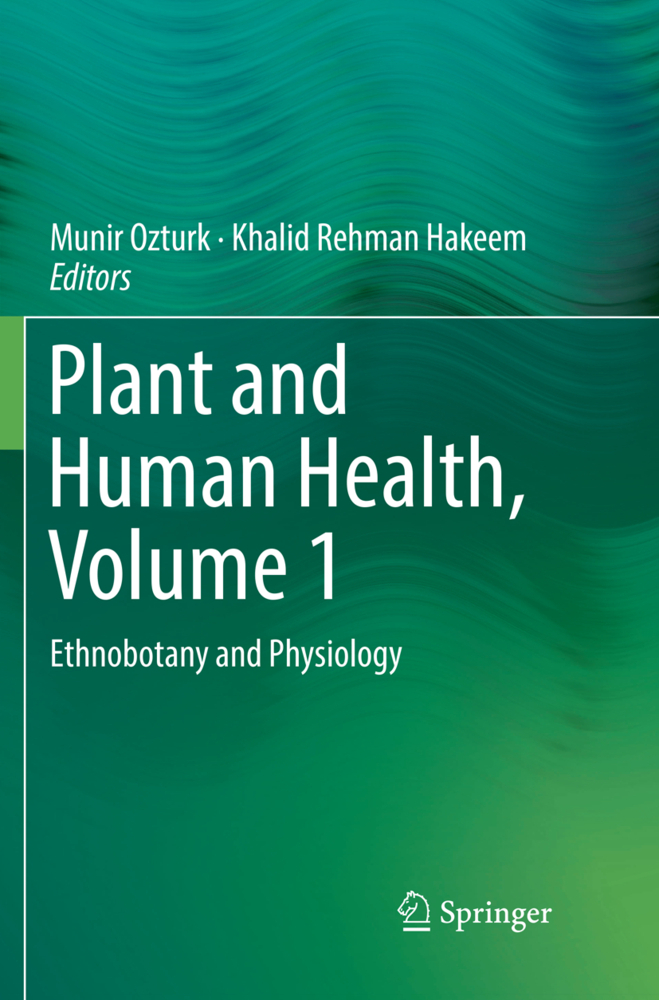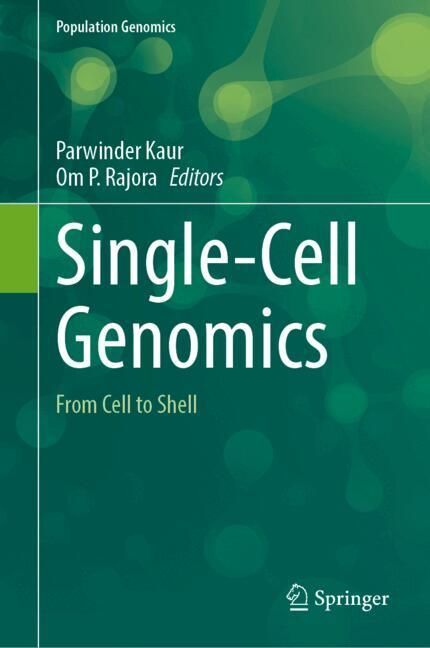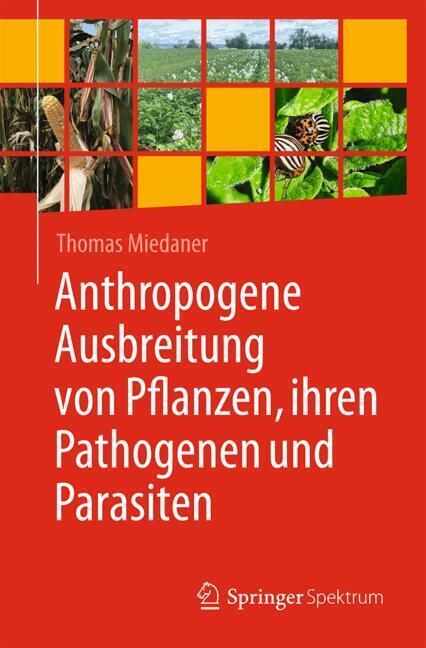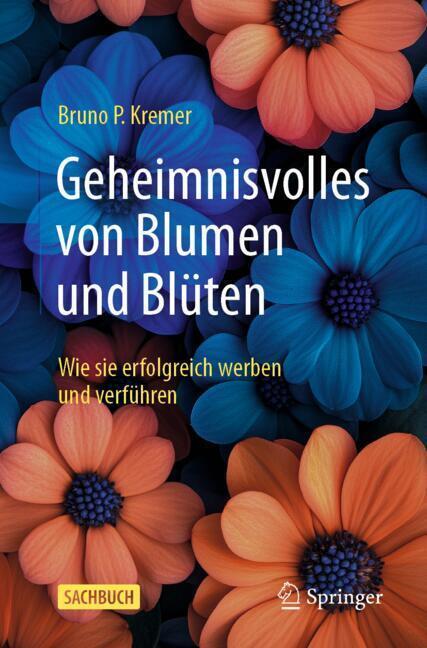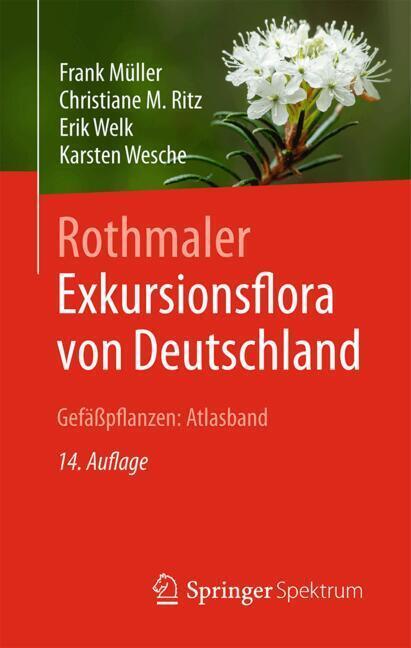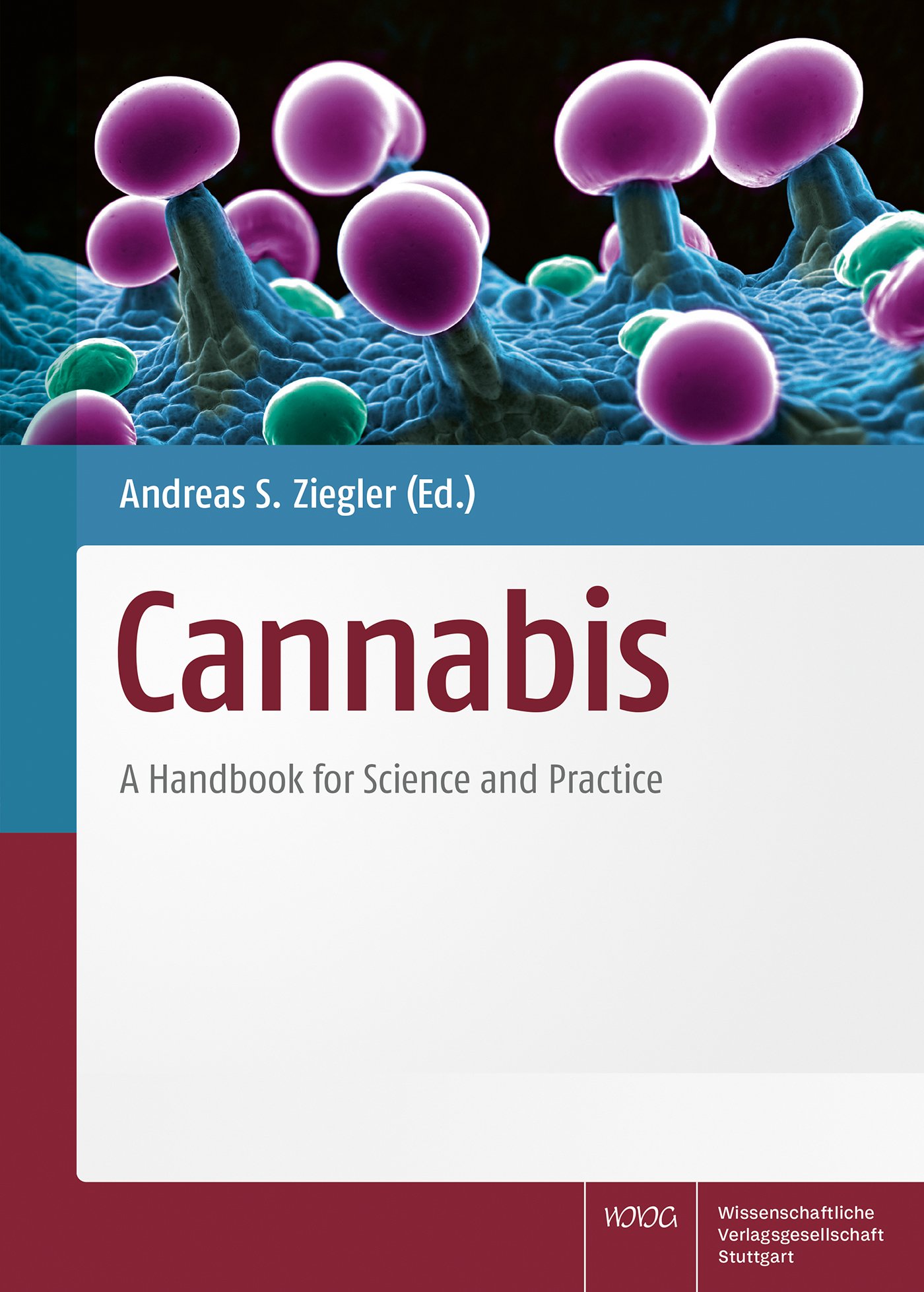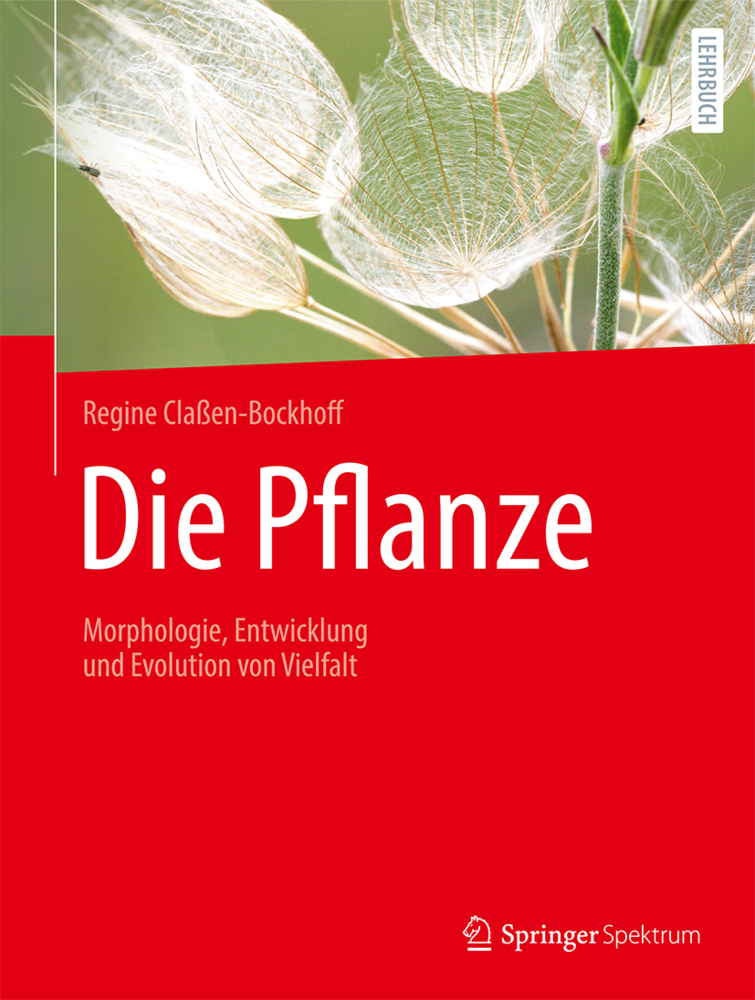Plant and Human Health, Volume 3
Pharmacology and Therapeutic Uses
Early anthropological evidence for plant use as medicine is 60,000 years old as reported from the Neanderthal grave in Iraq. The importance of plants as medicine is further supported by archeological evidence from Asia and the Middle East. Today, around 1.4 billion people in South Asia alone have no access to modern health care, and rely instead on traditional medicine to alleviate various symptoms. On a global basis, approximately 50 to 80 thousand plant species are used either natively or as pharmaceutical derivatives for life-threatening conditions that include diabetes, hypertension and cancers. As the demand for plant-based medicine rises, there is an unmet need to investigate the quality, safety and efficacy of these herbals by the 'scientific methods'. Current research on drug discovery from medicinal plants involves a multifaceted approach combining botanical, phytochemical, analytical, and molecular techniques. For instance, high throughput robotic screens have been developed by industry; it is now possible to carry out 50,000 tests per day in the search for compounds which act on a key enzyme or a subset of receptors. This and other bioassays thus offer hope that one may eventually identify compounds for treating a variety of diseases or conditions. However, drug development from natural products is not without its problems. Frequent challenges encountered include the procurement of raw materials, the selection and implementation of appropriate high-throughput bioassays, and the scaling-up of preparative procedures.
Research scientists should therefore arm themselves with the right tools and knowledge in order to harness the vast potentials of plant-based therapeutics. The main objective of Plant and Human Health is to serve as a comprehensive guide for this endeavor. Volume 1 highlights how humans from specific areas or cultures use indigenous plants. Despite technological developments, herbal drugs still occupy a preferential place in a majority of the population in the third world and have slowly taken roots as alternative medicine in the West. The integration of modern science with traditional uses of herbal drugs is important for our understanding of this ethnobotanical relationship. Volume 2 deals with the phytochemical and molecular characterization of herbal medicine. Specifically, it will focus on the secondary metabolic compounds which afford protection against diseases. Lastly, Volume 3 focuses on the physiological mechanisms by which the active ingredients of medicinal plants serve to improve human health. Together this three-volume collection intends to bridge the gap for herbalists, traditional and modern medical practitioners, and students and researchers in botany and horticulture.
Dr. Khalid Rehman Hakeem (PhD) is an Associate Professor at King Abdulaziz University, Jeddah, Saudi Arabia. He has completed his Ph.D. (Botany) from Jamia Hamdard, New Delhi, India in 2011. Dr. Hakeem has worked as Post Doctorate Fellow in 2012 and Fellow Researcher (Associate Prof.) from 2013-2016 at Universiti Putra Malaysia, Selangor, Malaysia. His speciality is in Plant Eco-Physiology, Molecular biology, Plant-Microbe-soil interactions, Medicinal plant research and Environmental Sciences and so far has edited and authored more than 25 books with Springer International, Academic Press (Elsevier) etc. He has also to his credit more than 110 research publications in peer reviewed international journals, including 40 book chapters in edited volumes with international publishers. Dr Hakeem is the recipient of many national and international awards and fellowships.
Prof. (Dr.) Münir Öztürk (PhD) has served at the Ege University Izmir, Turkey for 50 years in different positions. He has been elected as the 'Vice President of the Islamic World Academy of Sciences'; has received the fellowships from Alexander von Humboldt, Japanese Society for Promotion of Science and National Science Foundation of USA. Dr. Ozturk h
Research scientists should therefore arm themselves with the right tools and knowledge in order to harness the vast potentials of plant-based therapeutics. The main objective of Plant and Human Health is to serve as a comprehensive guide for this endeavor. Volume 1 highlights how humans from specific areas or cultures use indigenous plants. Despite technological developments, herbal drugs still occupy a preferential place in a majority of the population in the third world and have slowly taken roots as alternative medicine in the West. The integration of modern science with traditional uses of herbal drugs is important for our understanding of this ethnobotanical relationship. Volume 2 deals with the phytochemical and molecular characterization of herbal medicine. Specifically, it will focus on the secondary metabolic compounds which afford protection against diseases. Lastly, Volume 3 focuses on the physiological mechanisms by which the active ingredients of medicinal plants serve to improve human health. Together this three-volume collection intends to bridge the gap for herbalists, traditional and modern medical practitioners, and students and researchers in botany and horticulture.
Dr. Khalid Rehman Hakeem (PhD) is an Associate Professor at King Abdulaziz University, Jeddah, Saudi Arabia. He has completed his Ph.D. (Botany) from Jamia Hamdard, New Delhi, India in 2011. Dr. Hakeem has worked as Post Doctorate Fellow in 2012 and Fellow Researcher (Associate Prof.) from 2013-2016 at Universiti Putra Malaysia, Selangor, Malaysia. His speciality is in Plant Eco-Physiology, Molecular biology, Plant-Microbe-soil interactions, Medicinal plant research and Environmental Sciences and so far has edited and authored more than 25 books with Springer International, Academic Press (Elsevier) etc. He has also to his credit more than 110 research publications in peer reviewed international journals, including 40 book chapters in edited volumes with international publishers. Dr Hakeem is the recipient of many national and international awards and fellowships.
Prof. (Dr.) Münir Öztürk (PhD) has served at the Ege University Izmir, Turkey for 50 years in different positions. He has been elected as the 'Vice President of the Islamic World Academy of Sciences'; has received the fellowships from Alexander von Humboldt, Japanese Society for Promotion of Science and National Science Foundation of USA. Dr. Ozturk h
1;Dedication;5 2;Foreword;6 3;Preface;8 4;Contents;10 5;Phytochemical Constituents and Pharmacological Effects of Licorice: A Review;19 5.1;Introduction;19 5.1.1;Taxonomic Description;20 5.1.2;Botanical Description;20 5.1.3;Traditional Uses;20 5.2;Pharmacological Activities;21 5.2.1;Antimicrobial Activity;21 5.2.2;Antiviral Activity;23 5.2.3;Anti-inflammatory;24 5.2.4;Anti-ulcer;24 5.2.5;Antitumor;24 5.2.6;Antioxidant;25 5.2.7;Hepatoprotective Activity;26 5.2.8;Dermatological Effect;26 5.2.9;Antidepressant and Memory-Enhancing Activity;26 5.2.10;Other Effects;27 5.3;Phytochemistry;27 5.3.1;Flavonoids;28 5.3.2;Saponins;29 5.3.3;Phenolic Compounds;29 5.3.4;Coumarins;30 5.3.5;Essential Oils and Other Compounds;30 5.4;Side Effects and Toxicity;30 5.5;Conclusion;31 5.6;References;32 6;Glycyrrhiza glabra (Licorice) in Turkmenistan: Medicinal and Biological Aspects;40 6.1;Introduction;40 6.2;Medicinal Value of Licorice (G. glabra);43 6.3;Industrial Aspects;48 6.4;Conclusions;49 6.5;References;50 7;Chemical Composition and Biological Uses of Artemisia absinthium (Wormwood);53 7.1;Introduction;53 7.1.1;Historical Background of Artemisia absinthium;54 7.1.2;Medicinal Importance of Artemisia absinthium;55 7.2;Taxonomy;56 7.3;Phytochemistry of Artemisia absinthium;57 7.3.1;Active Constituents;58 7.4;Antimicrobial Activity of Artemisia absinthium;63 7.5;Adaptogenic and Nootropic Activity of Artemisia absinthium;65 7.5.1;Forced Swimming Test (FST);66 7.5.2;Tail Suspension Test;66 7.6;Antidiabetes Effects of Artemisia absinthium;67 7.7;Anticancer Activity of Artemisia absinthium;68 7.8;Gastrointestinal Effects of Artemisia absinthium;70 7.9;Antioxidant Activity of Artemisia absinthium;70 7.10;Immunomodulatory Effect of Artemisia absinthium;72 7.11;Central Nervous System and Epileptic Effects of Artemisia absinthium;73 7.12;Anti-obesity Effects of Artemisia absinthium;74 7.13;Antifertility Effects of Artemisia absinthium;75 7.14;Toxicity and Interaction of Artemisia absinthium;75 7.15;References;76 8;Dietary Phytochemicals and Their Potential Effects on Diabetes Mellitus 2;80 8.1;Introduction;80 8.2;Pathogenesis;81 8.3;Dietary Phytochemicals;84 8.3.1;Polyphenols;84 8.3.2;Amino Acid;89 8.3.3;Saponins;89 8.3.4;Terpenoids (Isoprenoids);90 8.3.5;Abscisic Acid (ABA);91 8.3.6;Lycopene and b-Carotene;91 8.3.7;Oxyphytosterol;92 8.3.8;Phytosterols/Stanols;92 8.4;Conclusion;95 8.5;Future Consideration;95 8.6;References;95 9;Antianxiety Activities Associated with Herbal Drugs: A Review;102 9.1;Introduction;102 9.2;Allopathic Anxiolytic Agents, Pharmacodynamics, and Disadvantages;103 9.3;Plants Having Anxiolytic Effects;103 9.3.1;Ashwagandha;103 9.3.2;Kava;104 9.3.3;St. John's-Wort;104 9.3.4;Brahmi;105 9.3.5;Passionflower;106 9.3.6;Siberian Ginseng;107 9.3.7;Star Flower;107 9.3.8;Ginseng;107 9.3.9;Salvia reuterana;108 9.3.10;Ginkgo;108 9.3.11;American Skullcap;109 9.3.12;Valerian;110 9.3.13;Damiana;111 9.3.14;Nees;111 9.3.15;Safed Musli;111 9.3.16;Griseb;112 9.3.17;Clary;112 9.3.18;Mugwort;112 9.3.19;Magnoliaceae;112 9.4;Comparison of Anxiolytic Activity of Herbal Plant Against Allopathic Formulations;113 9.5;Conclusion;113 9.6;References;114 10;Medicinal Plants in the Treatment of Arthritis;116 10.1;Introduction;116 10.2;Causes;117 10.3;Epidemiology;117 10.4;Need for Herbal Drugs for the Management of RA;117 10.5;Medicinal Plants with Antiarthritic Potential;117 10.5.1;Arctium lappa;124 10.5.2;Artemisia absinthium L.;124 10.5.3;Senna;125 10.5.4;Citrus medica L.;125 10.5.5;Clematis ochroleuca;126 10.5.6;Colchicum autumnale;127 10.5.7;Cuscuta epithymum;128 10.5.8;Asafoetida;128 10.5.9;Black Caraway;129 10.5.10;Rhubarb Root;130 10.5.11;China Root;131 10.5.12;Nux Vomica;132 10.5.13;Karanja;133 10.5.14;Punarnava;133 10.5.15;Haritaki;134 10.5.16;Avocado;134 10.5.17;Cat's Claw;135 10.5.18;Tayuya;135 10.5.19;Chuchuhuasi;136 10.5.20;Carrapicho;136 10.5.21;Guaco;137 10.5.22;Shallaki;137 10.5.23;Sarasaparilla;137 10.5.24;Aloe Plant;138 10.5.25;Ashwagandha;138 10.5
Ozturk, Munir
Hakeem, Khalid Rehman
| ISBN | 9783030044084 |
|---|---|
| Artikelnummer | 9783030044084 |
| Medientyp | E-Book - PDF |
| Copyrightjahr | 2019 |
| Verlag | Springer-Verlag |
| Umfang | 394 Seiten |
| Sprache | Englisch |
| Kopierschutz | Digitales Wasserzeichen |

